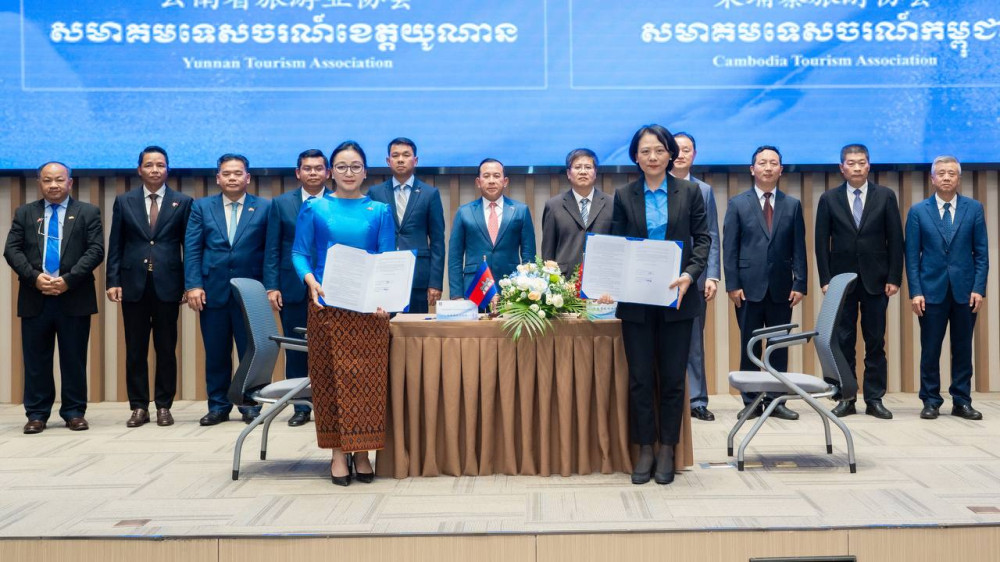New Agreements to Foster Tourism Cooperation
On August 26, 2025, five memorandums of understanding (MoUs) were signed in Yunnan province to enhance tourism collaboration between Cambodia and Yunnan, China. This initiative represents a significant step toward bolstering tourism ties, with the agreements forming the backbone of this partnership.
Officials overseeing the signing included H.E. Huot Hak, Minister of Tourism from Cambodia, Mr. Ma Zhigang, the Head of the Yunnan Provincial Department of Culture and Tourism, and Mr. Liu Minglin, CEO of Yunnan Investment Group. These officials emphasized their commitment to nurturing tourism growth through mutual coordination.
Details of the Agreements
The five MoUs focus on several key areas:
- Collaboration between Siem Reap Provincial Department of Tourism and the Yunnan Provincial Department of Culture and Tourism.
- Coordination between Cambodia Tourism Marketing and Promotion Board and Angkor International Airport Investment.
- Partnership formation between Cambodia Tourism Vocational School and the Yunnan College of Tourism.
- Joint efforts between the Cambodia Tourism Association and the Yunnan Provincial Tourism Association.
- Cooperation between the Cambodia Tourism Association and Yunnan Qicheng International Travel Services Co., Ltd.
Discussions with Key Stakeholders
During the visit to Yunnan, H.E. Huot Hak met with representatives from major tourism enterprises, including influential global travel companies like Trip.com. The discussions revolved around enhancing cooperation and implementing concrete development initiatives aimed at increasing tourist flows between Cambodia, Yunnan, and international markets.
An important component of these discussions involved promoting Cambodia’s tourism potential and addressing misinformation about the region. Authorities aim to organize familiarization trips (FAM Trips) that showcase Cambodia’s rich cultural heritage and natural beauty to potential tourists and travel agents.
Impact on Tourism Trends
According to data from the Cambodian tourism ministry, approximately 690,000 tourists from China visited Cambodia in the first seven months of the current year. This figure demonstrates a remarkable growth of 48.2% compared to the previous year. Such statistics underline the importance of international partnerships in sustaining and boosting tourism in the region.
A Historical Perspective on Cambodia’s Tourism Landscape
Cambodia’s journey as a tourist destination has seen dramatic transformations over the decades. From the early days of burgeoning visitor interest at Angkor Wat until the recent revival post-conflict, the country has developed a robust tourism framework. Angkor, recognized as a UNESCO World Heritage site since 1992, is a focal point of cultural tourism, attracting millions each year.
Historically, Cambodia has grappled with many challenges, including socioeconomic pressures and the impacts of past conflicts. Over recent years, however, strong initiatives have been set in place to develop ecotourism and cultural tourism, ensuring that growth aligns with sustainable practices. This evolution is crucial for fostering long-term benefits for local communities and the environment.
Future Trends in Tourism Cooperation
Looking ahead, the agreements signed between Cambodia and Yunnan indicate a trend toward more interconnected tourism experiences across borders. The regional cooperation emphasizes the importance of collective marketing strategies and shared resources, while also addressing visitor safety, transportation links, and promotional campaigns. Such partnerships can enhance broader networking opportunities, potentially paving the way for new attractions and experiences tailored for diverse tourist preferences.
Enhancing International Tourism Dynamics
The agreements added between Cambodia and Yunnan showcase a deeper commitment to developing tourism that is responsive to global trends. With a focus on enhancing connectivity and collaboration, there are promising prospects for increased boating and sailing activities in the region. The cooperative efforts can lead to the growth of marine tourism experiences, where travelers can engage in sailing expeditions and enjoy the picturesque beauty of Cambodia’s coastline and waterways.
Conclusione
As this new chapter in Cambodia and Yunnan tourism unfolds, the significance of cross-border cooperation is becoming clear. With the tourism landscape evolving continuously, leveraging partnerships can yield significant impacts on regional attractions, including the potential for marine activities. Visitors seeking adventure on the water will find bountiful opportunities as investment in tourism infrastructure progresses. Travel enthusiasts can anticipate exploring the beauty of this culturally rich region while engaging in unforgettable experiences.
For those looking to set sail on their next adventure, GetBoat.com serves as an international marketplace for renting sailing boats and yachts, offering options to fit every taste and budget. The growing tourism initiatives in Cambodia and beyond reflect a vibrant future for water activities, emphasizing the region’s commitment to combining cultural heritage with maritime experiences.

 Strengthening Cambodia and Yunnan Tourism Links">
Strengthening Cambodia and Yunnan Tourism Links">
